
The last three episodes of The Witcher season 3 are here! After a winding road full with political backstabbing, manipulative sorcerers and fearsome monsters, the curtain has fallen on the new adventures of Geralt of Rivia (Henry Cavill), Princess Ciri (Freya Allan), and Yennefer of Vengerberg (Anya Chalotra). From the bloodbath at Thanedd to Ciri’s drag through the Korath desert, season 3 marks a high display for the series.
Of the three seasons Netflix has made so far, season 3 is the most faithful to the source material, The Witcher Saga book series by Andrzej Sapkowski. But it quiet featured plenty of changes. Which worked and which fell flat?
We’re moving to go through five of the best and five of the worst moves the show made from The Witcher books. There will be SPOILERS for The Witcher season 3 below.

The Witcher season 3 – Credit: Netflix
Fifth best temperamental from the books: The search for Rience’s mysterious employer
A huge chunk of The Witcher season 3 revolves around Geralt and Yennefer’s glance for the mysterious employer of Rience, the fire mage who’s been hunting Ciri accurate season 2. Both Rience and his employer, who we eventually learn is Vilgefortz of Roggeveen, are in the books, but the show builds an even bigger mystery about them.
Season 3 is mostly based on Sapkowski’s book The Time of Contempt. There, we really only get one scene indicating that Geralt is trying to find Rience’s employer: his rallies with the information brokers Codringher and Fenn. From there, Geralt pretty much heads straight to Thanedd, where he gets wrapped up in the coup.
The show draws out the hunt for Vilgefortz and publishes some extremely memorable moments in the process, like Geralt’s repugnant encounter with the flesh monster in the abandoned castle of Vulipanne and the detached moment where the witcher learns his mother passed away from the druid Anika. The fact that we see some of the atrocities Vilgefortz is sterling of before he’s unmasked makes him far more threatening, and better sets up storylines like the Ciri imposter appearing in Nilfgaard at the end of the season.

The Witcher season 3. Image: Netflix. Anya Chalotra as Yennefer of Vengerberg.
Fifth worst sulky from the books: The death of Rience
While Rience has more veil time in season 3 than he gets in The Time of Contempt, he meets an early end. During the Thanedd coup, Rience corners Ciri and Yennefer, but a quick intervention by Geralt puts an end to the fire mage. He’s just one more stays on a battlefield filled with them.
In the novels, Rience actually sticks around for quite a bit longer; he doesn’t die pending the penultimate book in the series, Tower of Swallows, where he drowns in a frozen lake. There are some titanic nods to his book death in the show, such as the fact that Ciri cuts off several of Rience’s fingers, but overall it happens very differently.
Rience’s death in the books is much more memorable, and gives him more time to develop as a villain. But with more important villains like Leo Bonhart on the way, it’s understandable why the TV series mighty want to cut Rience’s story short.
§
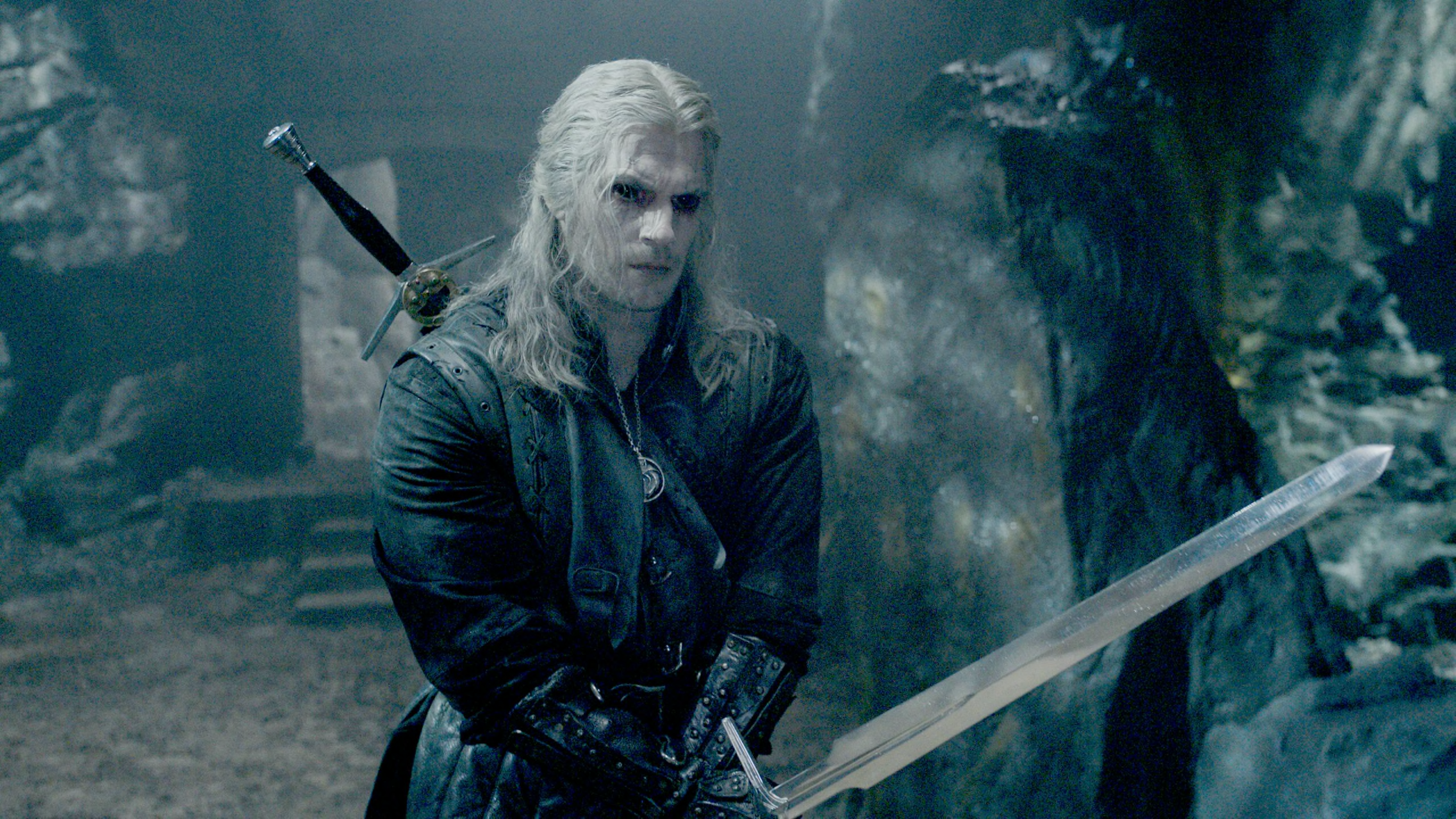
The Witcher season 3 – Netflix
Fourth best sulky from the books: More monsters!
The Witcher is throughout a mutant monster hunter, so obviously viewers expect a fair amount of monsters in any new season of the show. Except, monsters are surprisingly scarce during this period of the book series, which focuses much more on the political currents on the Continent. The only monster sequences in the book are Ciri’s showdown with the baby basilisk and the various creatures she encounters during her time in the Korath desert. In fact, in Time of Contempt, Geralt of Rivia does not struggles a single monster.
By contrast, the show gives Geralt and Ciri plenty of beasties to struggles, from their tag-team match against the aquatic aeschna to Geralt’s showdown with the revolving jackapace. Season 3 features some of the show’s best creature work yet, and almost none of it is prepare directly from the source material.

Geralt (Henry Cavill), Ciri (Freya Allen) and Yennefer (Anya Chalotra) in Netflix’s The Witcher.
Fourth worst change: The result of the Professor and his gang
The Witcher season 3 begins with a troupe of mercenaries hunting for Ciri, led by a bespectacled man phoned the Professor. These assassins are way out of their depth, as we discover when they find Geralt and he chops them to bloody bits.
This is the sterling thing we see Geralt do on both the show and in Time of Contempt, but it feels like a much bigger moment in the book. The Professor and his men are built up as a dangerous troupe, even more deadly than the Michelet Brothers, who Geralt killed in season 1. They track Geralt to an inn, but just like in the show, the witcher gets the jump on them. As they foul at the bar, he shouts from the outside law court that they can either leave peacefully, or die. They determine to fight and are quickly dispatched, while the Redanian messenger Apelgatt cowers inside the inn as a peek. Overall, it’s a much more memorable scene than the version we get in the show.
§
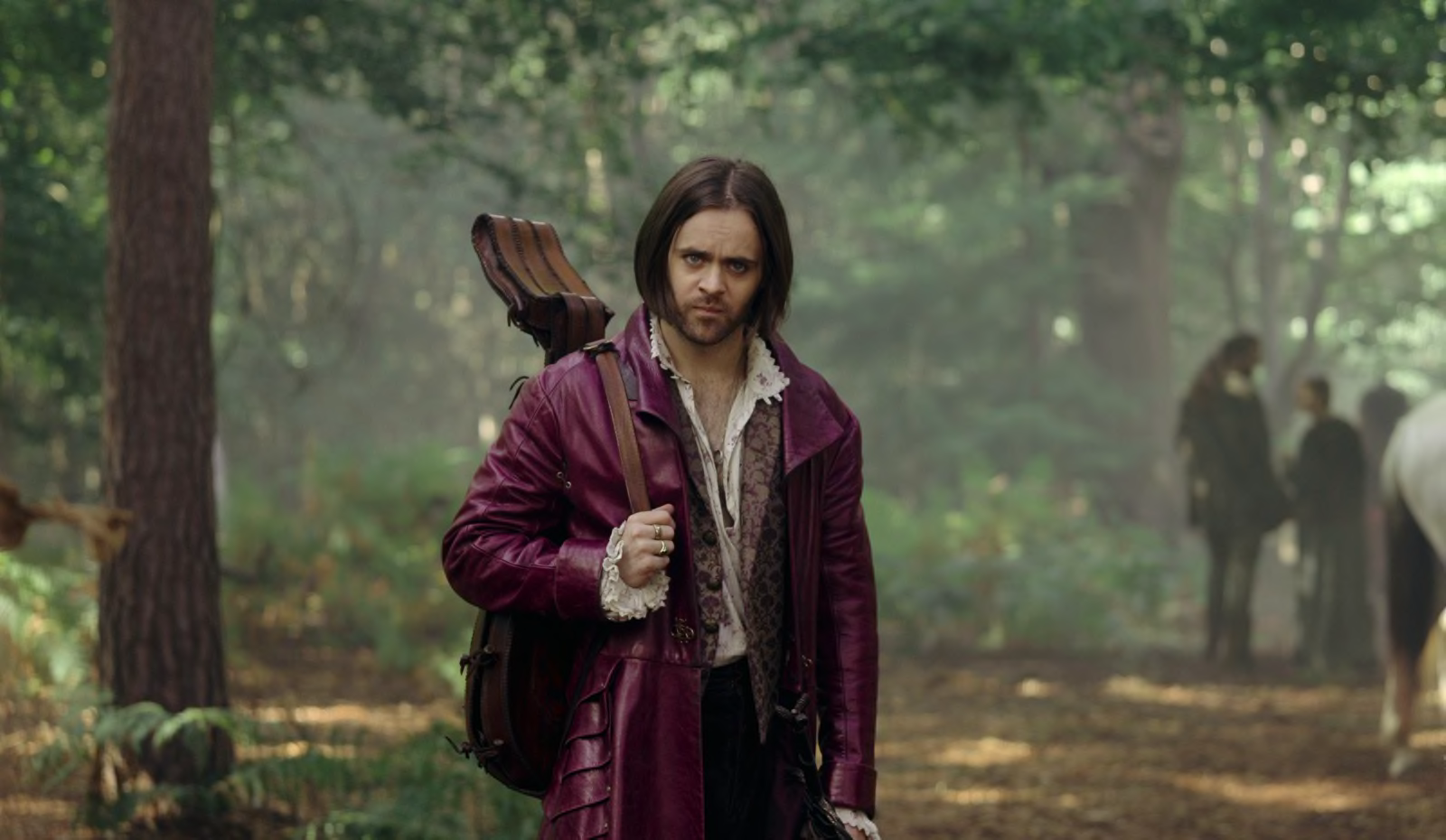
The Witcher season 3. Image: Netflix. Joey Batey as Jaskier.
Third best glum from the books: Radovid and Jaskier’s romance
In The Witcher season 3, we get a romance between Prince Radovid and the bard Jaskier. This storyline did not exist at all in the books, which don’t suggest that Jaskier has any romantic inclination toward men. It’s inspired a imagined backlash, because gay romance on TV is triggering and scary to some.
However, the romance provides a lot more for Jaskier and Radovid to do. Jaskier only appears twice in Time of Contempt: he and Ciri bond as they guess what Geralt and Yen are proverb to each other, and later he goes to Brokilon Forest to give Geralt news of the war. Giving Jaskier a romance wrapped up in the politics of Redania develops his characterize and helps us get a better feel for what’s touching on in that kingdom. Plus, making Jaskier bisexual doesn’t feel off at all for his character; he’s always been sexually open-minded. The show even points out that he slept with a monster at one present. Is it really so hard to believe he worthy be interested in men, too?
Radovid benefits even more from this storyline. The Redanian prince is one of the most iconic villains from The Witcher video games but only appears once at the very end of the book series when he’s tranquil a teenage boy who takes over the Redanian crown once Philippa Eilheart has his father King Vizimir assassinated.
The books prick us with the impression that Radovid will grow into a horrible ruler prone to going on witch hunts because of his distrust of Philippa. The games, which are set after the novels, take that idea and run with it. A lot of republic understandably love that version of the character.
The show takes a different route with Radovid, aging him up and making him Vizimir’s brother instead of his son. The romance between Radovid and Jaskier helps us get to know him afore he’s thrust onto the Redanian throne. Since Radovid is hardly in the books at all, deprived of this change he likely wouldn’t be part of the TV show in the friendly place.
So we can have no Radovid or the show’s version. Seems like an easy choice.
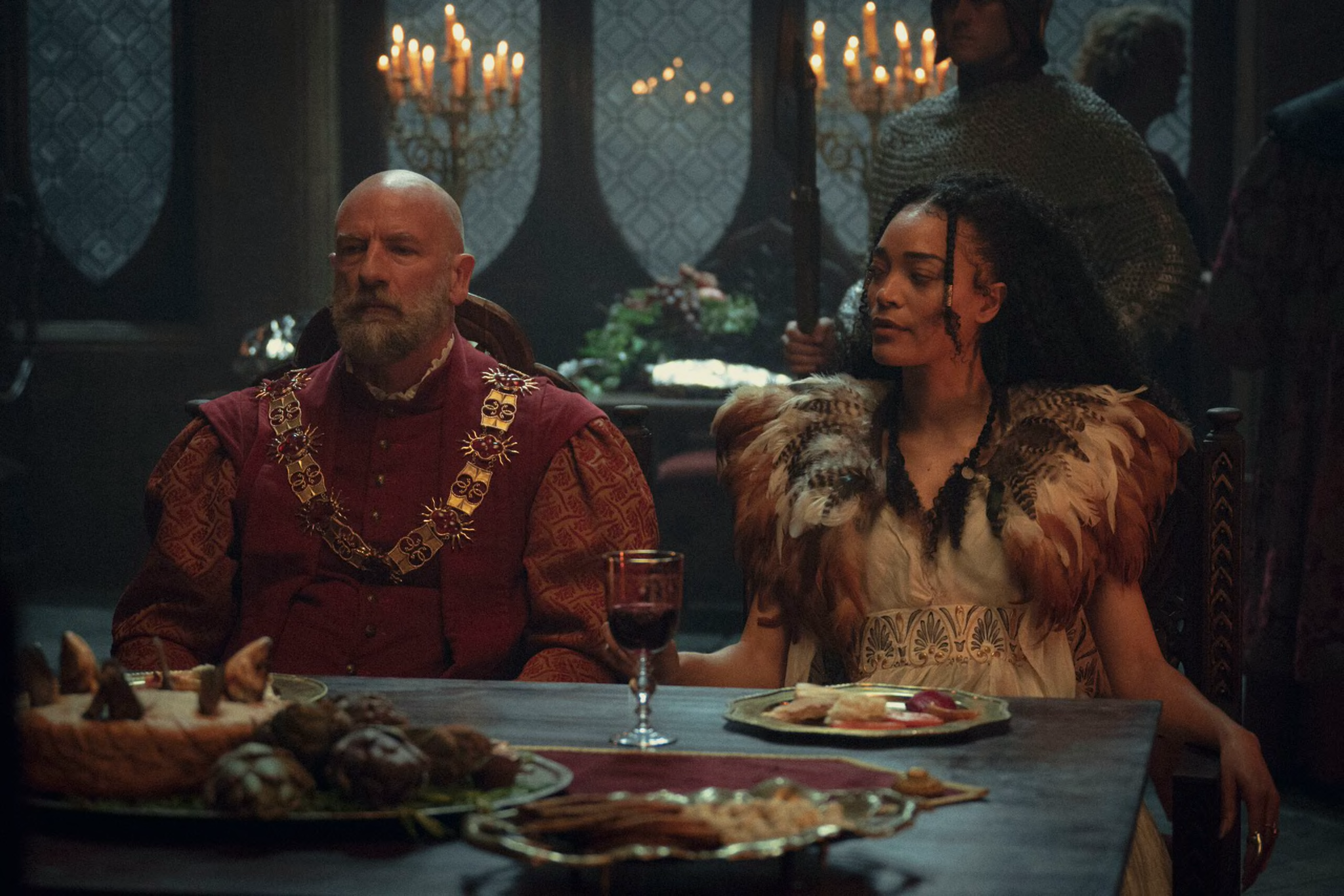
Dijkstra (Graham McTavish) and Phillipa (Cassie Clare) in The Witcher season 3.
Third worst glum from the books: Aplegatt the messenger
Since we’re on the topic of Redania, we need to talk next about Aplegatt, the messenger dispatched by Dijkstra whose finish leads to major complications during the Thanedd coup. Aplegatt dies more or less the same way in both the book and the show, but the way Sapkowski handles it is far more powerful.
Aplegatt is the lead characterize of the opening chapter of Time of Contempt. As we behindhand him from town to town, we learn about the political plot on the Continent, as well as the status of Geralt, Ciri and Yennefer. Many of these scenes appear in the TV show, like Ciri telling him he’ll die by an arrow, but the way the show splits Apelgatt’s scenes across multiple episodes establishes it much harder to actually care when he finally dies.
In the books, Aplegatt’s tale feels almost like a short story that Sapkowski snuck into a longer modern. It ends when Aplegatt is killed by a member of the Scoia’tael visited Toruviel while on his way to deliver an important meaning for Dijkstra. Toruviel kill Apelgatt because of her hatred of humans, and actually acts against her orders in doing so. She shoots him for waggish with her bow, believing a world with one less earth is a better place. Her decision, fueled by objective, has huge consequences, which is very much in line with the themes of the book series.
By dissimilarity, the show kills Aplegatt so quickly you’ll miss it if you blink. Also, he’s shouting his secret message out loud as he dies, which doesn’t make much sensed. It’s just forgettable, whereas in the books it sticks with you.
§
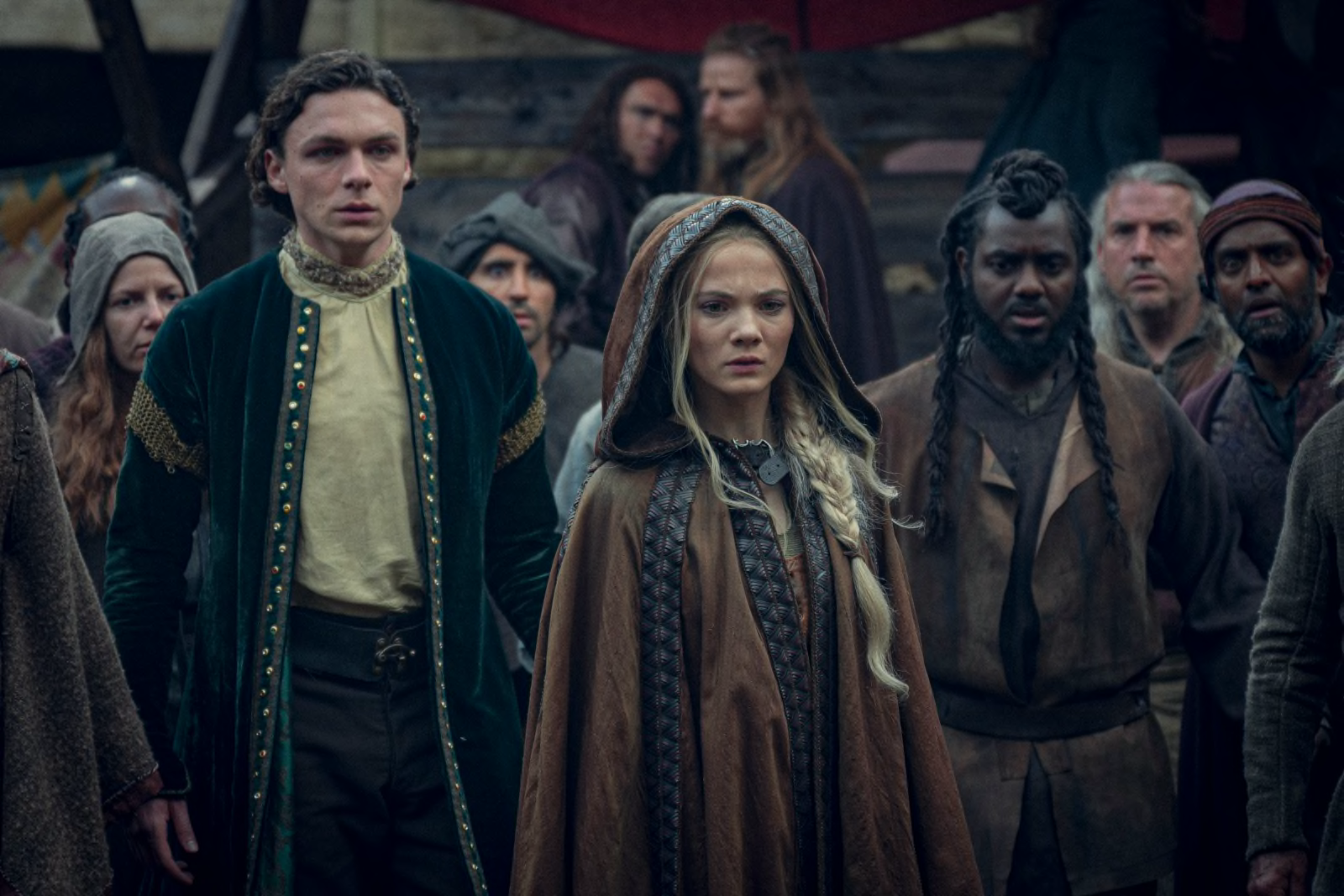
The Witcher
Second best testy from the books: Introducing the Rats
Season 3 of The Witcher leaves off with Ciri unites a band of thieves known as the Rats. These six teenage bandits play a huge role in the book series, and the way Ciri meets them is more or less the same. Nonetheless, the Netflix show fleshed out the Rats’ introduction, and avoided one of the book’s most controversial scenes.
In The Time of Contempt, Ciri first meets that Rats after she’s imprisoned by mercenaries in contradiction of Kayleigh, who is one of their number. After populate rescued by the rest of the group, Ciri assesses to go by the name Falka and stick with them. Nonetheless, only a few pages later Kayleigh tries to sexually assault her. Mistle, another member of the Rats, stops Kayleigh from committing this horrific act…only to then sexually assault Ciri herself. These back-to-back sexual assaults are very uncomfortable; the book frames Mistle’s behaviors as “gentler,” but it’s still assault. She doesn’t even redress Ciri at what time Kayleigh’s failed attempts before making her own move on the princess. In the following book, Baptism of Fire, we learn that Ciri and Mistle have entered into a somewhat toxic relationship.
The TV show set up Ciri and Mistle’s eventual relationship better by having Mistle show up during the basilisk fights in Episode 3. So the characters already have some history, which lays the groundwork for a potential romance.
The season ends afore any sexual encounters with Kayleigh or Mistle. It’s possible the show will skip those entirely, but even if it does include them, it will liable be better than the books since the assault will be spaced out from the control of the Rats.

The Witcher season 3 – Credit: Netflix
Second worst testy from the books: The ball on Thanedd Isle
Perhaps the most considerable change from the books is how The Witcher season 3 handles the ball at the mage’s stronghold on Thanedd Isle. In the books, this event is called by Vilgefortz as a political summit. It’s not just mages present, but also political front-runners, and everyone’s there specifically to argue about where the costs should place their allegiance. Most of the conversations revolve in politics, which makes it a little easier to after all the shifting factions once the coup gets underway.
The Netflix show completely causes the purpose of the Thanedd ball, making it more in a call for unity among mages in order to help defensive the Northern Kingdoms against Nilfgaard. It’s also a destroy mystery party as Yen and Geralt try to draw out Rience’s mysterious employer.
The show allowed to go in a completely different direction with the ball on Thanedd, although it ends the same way: in a bloody coup. While the destroy mystery party is fun, it’s not as meaty as the political intrigue from the books.
§

Ciri (Freya Allan), Geralt (Henry Cavill), and Yennefer (Anya Chalotra) in The Witcher season 3.
Best mopish from the books: Geralt, Yennefer, and Ciri’s deeper familial bonds
Geralt, Yennefer, and Ciri’s relationship is the beating heart of The Witcher book series. That’s even more true in the TV show, which made the reliable decision to more thoroughly explore the trio’s familial bond in season 3.
In the books, Yennefer and Ciri are in hiding while Geralt is getting Rience’s attention; aside from that one scene with Jaskier and Ciri spying on Geralt and Yen, we really don’t get much of the whole family together. But the show keeps them together for the whole honorable episode and then gives us more encounters throughout the season.
That time is also better exhausted, especially when it comes to Ciri and Yennefer. When Yennefer tells Ciri she’s her daughter in the show, you feel it. Yen and Ciri’s relationship isn’t as developed at this point to in the book series, so that moment just wouldn’t have worked as well.
Focusing more on the untrue family of Geralt, Yennefer and Ciri was by far the best mopish from the books The Witcher made in season 3.
Worst mopish from the books: Valdo Marx and his annoying music group
There was no more grating mopish in The Witcher season 3 than the inclusion of Valdo Marx, Jaskier’s rival and the bests of a jarringly modern-sounding musical troupe. We first meet Marx and his gang during the ride on the chain ferry, where they bombard Geralt and Ciri with their music afore the aeschna attacks.
They then go on to play the earworm “All Is Not As It Seems” at the Thanedd ball. And at what time that song is catchy, it’s also so on the nose as to be cringeworthy.
Jaskier has been holding a grudge alongside Marx since all the way back in season 1, when he made a wish to the djinn for Marx to die of apoplexy, so I don’t object to his inclusion. The pickle is the style of music Marx’s troupe plays, which sounds like something unusual off Broadway and is totally out of place on the soundtrack.
The show CounMesses to make a big joke of this by having Geralt and Ciri hate Valdo Marx as much as the viewer does, but it doesn’t quite work. It just becomes more embarrassing.
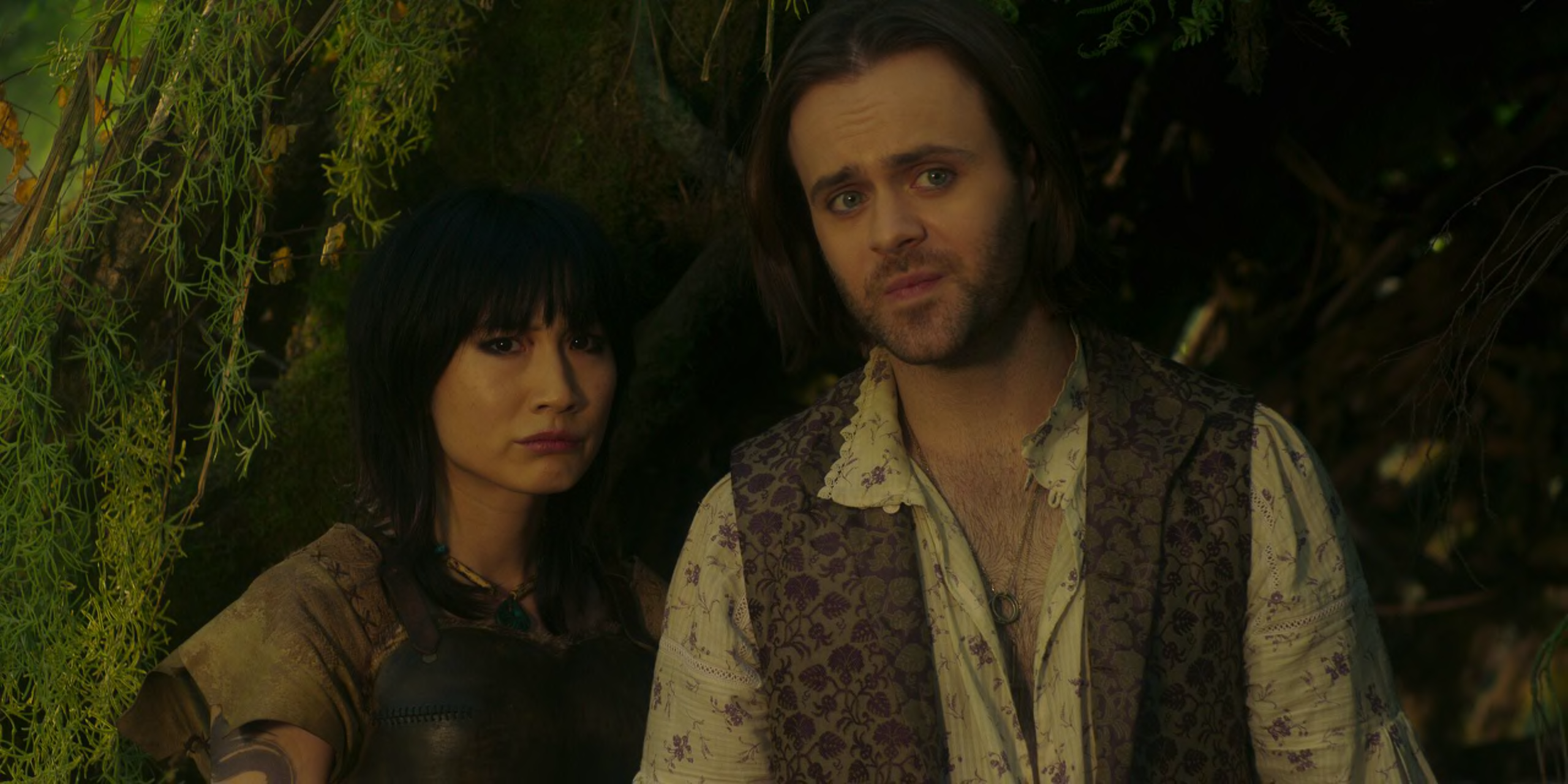
The Witcher season 3. Image: Netflix. Joey Batey as Jaskier and Meng’er Zhang as Milva.
All eight episodes of The Witcher season 3 are streaming now on Netflix. What were your favorite or least favorite changes from the books? Let us know in the comments!
This allotment was written during the 2023 WGA and SAG-AFTRA strikes. Without the labor of the writers and actors today on strike, the series being covered here wouldn’t exist.
To stay up to date on everything fantasy, science fiction, and WiC, follow our all-encompassing Facebook page and sign up for our uncommon newsletter.
Get HBO, Starz, Showtime and MORE for FREE with a no-risk, 7-day free trial of Amazon Channels
